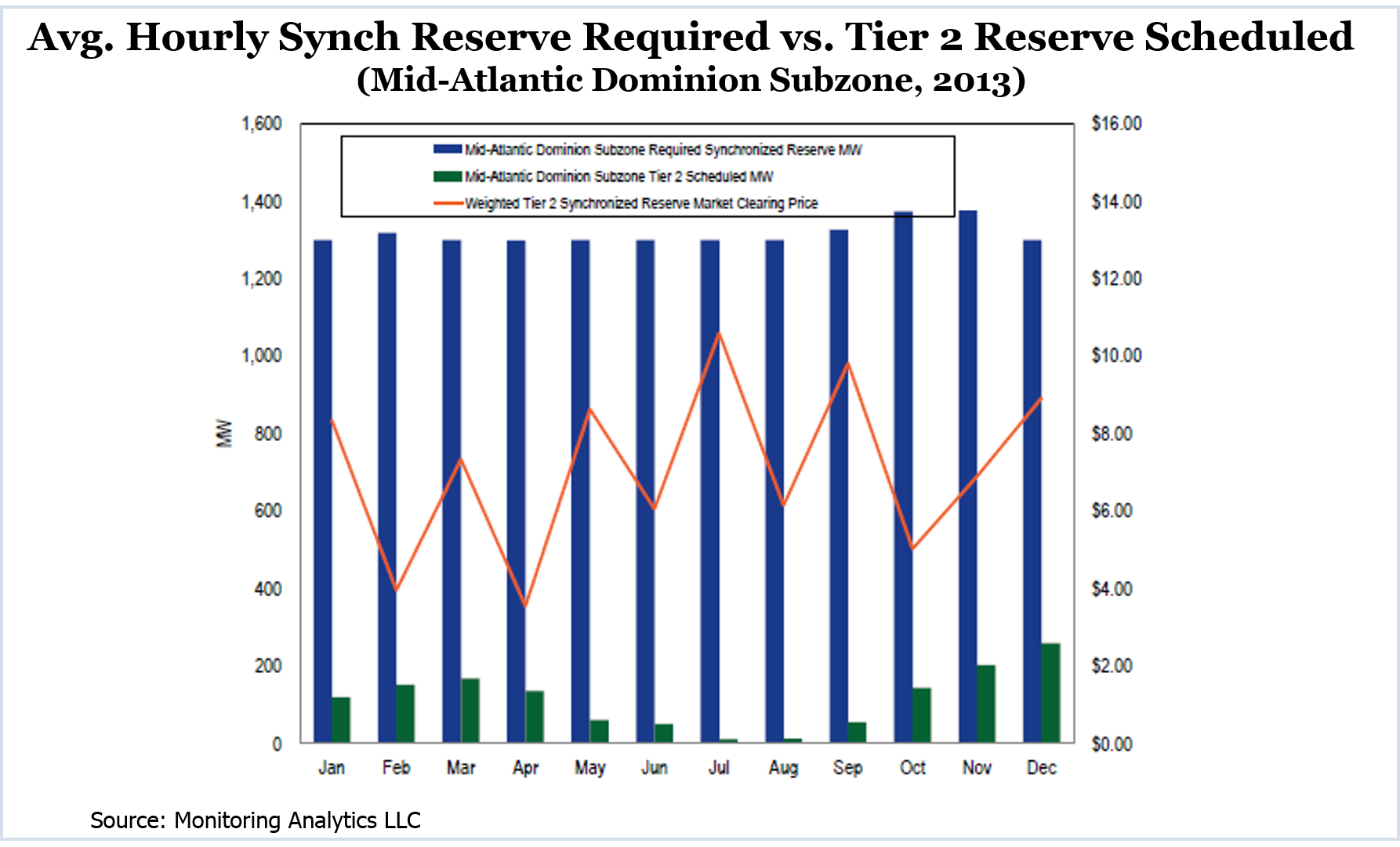PJM last week proposed eliminating some generators from the calculation of Tier 1 synchronized reserves, along with an unintended “windfall” the Market Monitor says those units receive in compensation.
Under a proposal outlined to the Market Implementation Committee last week, PJM’s market clearing engine would assume no synchronized reserve contribution from nuclear, wind, solar, batteries and certain hydro units that PJM says cannot be counted on to provide the service.
Although the clearing engine would set those resources’ synchronized reserve contribution to 0 MW, the generators would be credited for reserves they do provide in a spinning event.
The rule change also would eliminate a rule that requires PJM to pay Tier 1 resources when the non-synchronized reserve price rises above zero. Under the revision, only those resources that can “reliably provide” synchronized reserve service would receive that compensation.
“We’re paying Tier 1 a lot of money — in fact, a huge amount of money” for unresponsive resources, Market Monitor Joe Bowring said. “There’s no reason to do it.”
PJM’s 1,375-MW synchronized reserve requirement is equal to the largest contingency in the RTO. Tier 1 resources — online units following economic dispatch that are only partially loaded and thus able to increase output within 10 minutes — provide most of the needed reserves.
Tier 2 resources such as demand response and combustion turbines — which are capable of providing reserves within 10 minutes and have cleared the synchronized reserve market — make up any shortfall.
Realistic Estimates
PJM currently estimates Tier 1 resources based on the difference between units’ bid-in parameters (EcoMax) and economic dispatch points, rather than on explicit offers from resources, making it prone to errors. If PJM overestimates the Tier 1 resources available, it won’t procure enough Tier 2 resources.
“We have to make sure we have realistic estimates of what resources can increase output and what couldn’t be relied on,” explained Stu Bresler, vice president of market operations.
Wind units typically operate at their maximum capacity — but that is dependent on weather conditions, Bowring noted. “You have to be able to know [the extra output is] there, and you can’t do that with wind, because the wind may be blowing. It may not be.”
Synchronized Reserve Windfall
In addition, PJM’s synchronized reserve costs are higher than necessary because of the unintended consequence of its shortage pricing rules, which require that Tier 1 reserves be paid the Tier 2 synchronized reserve clearing price any time the non-synchronized reserve clearing price is above $0.
“This rule significantly increases the cost of Tier 1 synchronized reserves with no operational or economic reason to do so,” the Monitor said in the 2013 State of the Market report. “PJM is not actually reserving any Tier 1 but simply paying substantially more for the same product without any additional performance requirements.”
Although the rule doesn’t apply in most hours, when it does, it’s expensive. In 2013, the Monitor said, 40% of payments for Tier 1 reserves were paid when they were not needed. “This is a windfall payment to Tier 1 reserves,” the Monitor said.
Bowring said PJM’s proposal will not eliminate the problem. The RTO would still pay some Tier 1 resources the Tier 2 price when the non-synchronized reserve price is greater than zero, he said.




